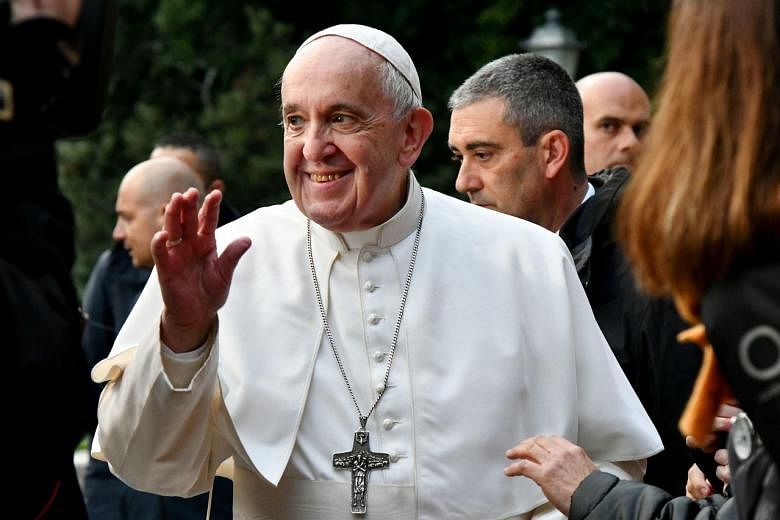ROME (REUTERS) - Pope Francis has defended the display of nativity scenes in town squares and other public places, which has become an annual contentious issue at Christmas time in countries such as the United States and France.
The Pope travelled to the town of Greccio, east of Rome, to visit the spot where St Francis of Assisi started the tradition by setting up the first nativity scene in 1223.
There, he signed a papal document known as an Apostolic Letter and titled "Admirabile Signum", (Wonderful Sign) on the meaning and importance of the nativity scene.
"With this letter, I wish to encourage the beautiful family tradition of preparing the nativity scene in the days before Christmas, but also the custom of setting it up in the workplace, in schools, hospitals, prisons and town squares," the document says.
Nativity scenes depict the birth of Jesus as Christians believe it took place - the baby and his mother posed in a humble stable setting with animals and shepherds, and kings bearing gifts who arrived days later.
The construction of such scenes in public squares or on government property is contested regularly by atheist, free speech or secularist groups.
In the United States, groups opposed to nativity scenes in public places say they violate the first amendment of the Constitution, which prohibits the establishment of a state religion.
In 1984, the US Supreme Court ruled in favour of allowing nativity scenes in public places, saying that they were not an effort to establish or support a particular religion and also possessed what the court called "legitimate secular purposes".
Still, even after that ruling, American groups have regularly challenged their use or have demanded equal space on public property to promote their non-religious views.
In 2014 in France, a court order to dismantle a nativity scene in a town hall because it violated the country's secular tradition prompted a backlash, which won support from right-wing politicians.
In other parts of the document, the Pope said on Saturday (Nov 30) that the purpose of the nativity scene was to teach "that we cannot let ourselves be fooled by wealth and fleeting promises of happiness" and that they were a reminder to help those less fortunate.
"From the manger, Jesus proclaims, in a meek yet powerful way, the need for sharing with the poor as the path to a more human and fraternal world in which no one is excluded or marginalised," he wrote.
Earlier, Pope Francis urged people to resist the excesses of consumerism in the period leading up to Christmas, calling it a virus that attacks faith and offends the needy.
"When you live for things, things are never enough, greed grows, other people become obstacles in a race," he said in the homily of a Mass, decrying that in many places in the world today, "consumerism reigns supreme".
Pope Francis spoke between the two biggest shopping days of the year in rich countries such as the United States - Black Friday and Cyber Monday. Online sales in the United States reached US$7.4 billion (S$10.1 billion) last Friday, up nearly 20 per cent from last year.

